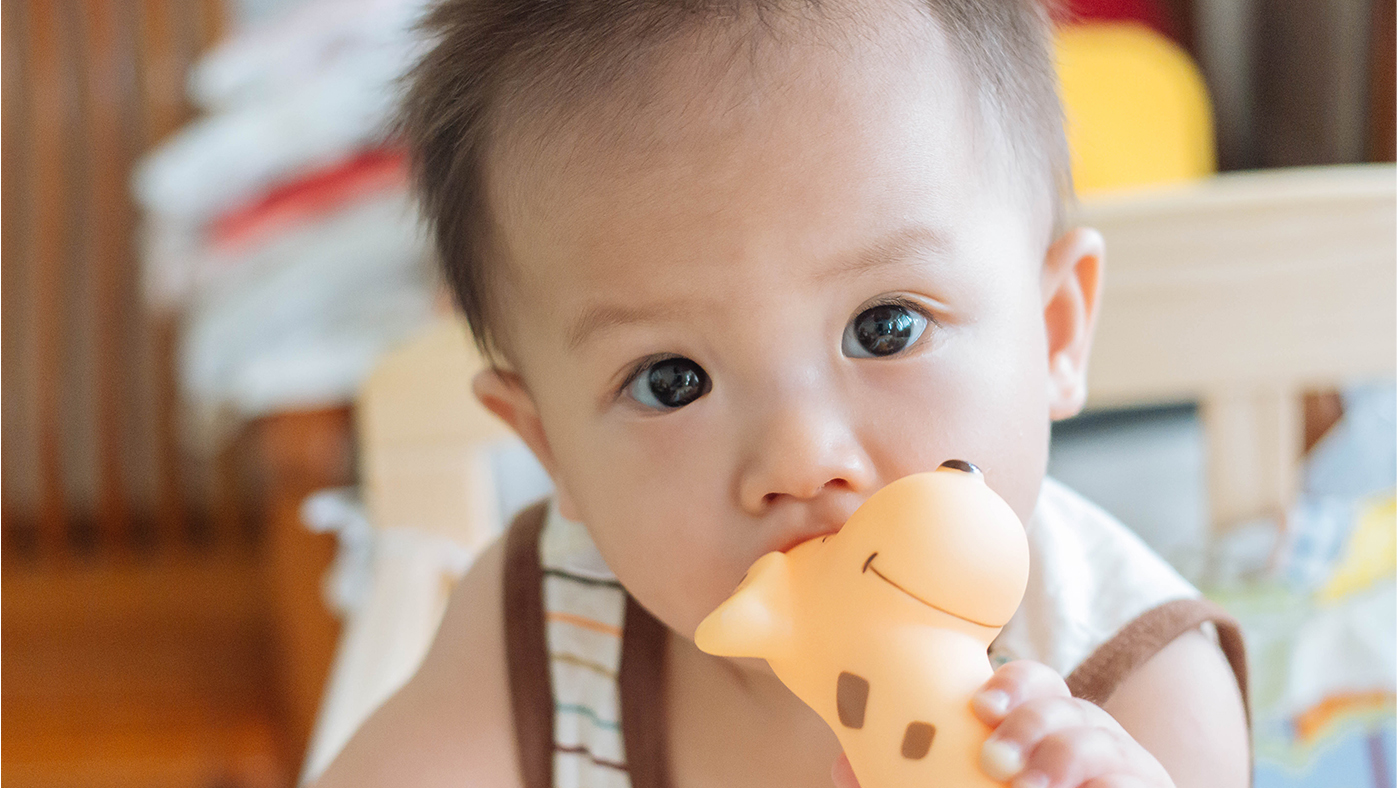Grabs objects, moves them around with hands and brings them to their mouth

Your baby has been using their sense of taste to gather information about their world since they were born[1]. Now that they are mastering their manual and visual coordination skills, your baby will thrive on being able to access even more information about fascinating things as they reach for, grasp and move objects with their hands.
As your baby has become more mobile, they have been using their gross motor skills to explore more of their environment. They are now combining this with their developing fine motor skills to grasp interesting items and explore them with their senses.
Sensorimotor development
Piaget linked development to action throughout childhood, as without actively exploring their curiosity about the world babies (and children) would not be able to learn new information. Between the ages of birth and two Piaget observed that children experience the ‘sensorimotor stage’ of cognitive development[2], in which infants explore their world through action by combining motor skills with their senses to gather information and create a perception about the world around them.
Piaget’s theories on child development inform much of what we know today, however new research has shown that infants are likely to also be making some decisions about when and why they choose to mouth items, beyond simply a reaction to the sensation[3].
You will notice your baby becoming more capable as they manipulate objects, using their hands and fingers to explore the properties of the item. You will see your baby using their developing coordination to bring items to their mouth for a quick taste, and they will be encountering a lot of new objects as their newly developing gross motor skills mean they can move more freely around their environment. It is an important time for safety-proofing your home, particularly removing small items which might cause a choking hazard from areas your baby plays freely in.
Your baby might not bring every item to their mouth. They are likely to explore each object slightly differently depending on its size, weight, texture and even its smell. Some objects will be held or moved around from hand to hand, perhaps being closely examined and held in front of their eyes.
Look out!
The ability to handle and explore items is a product of your baby’s increasing hand-eye coordination. This is an important skill which combines their developing vision, their motor skills and their awareness of concepts such as distance and depth. These understandings will continue to develop over the next few months and years as your baby explores and gathers information about their world.
Many future skills will rely on hand-eye coordination to be effective, most daily tasks from cleaning your teeth to cooking a meal will require hand-eye coordination[4].
What next?
Your baby will continue to use all their senses to feed their curiosity about the world as they grow. Offer them lots of opportunity to move around, to hold objects and (when safe) to taste things which interest them.
Their increasing fine motor skills, along with their improving hand-eye coordination, mean they may be interested in feeding themselves soft finger foods. As they practise bringing items to their mouth, some of their food might even make it to the target!
Your baby’s understanding of depth and distance will also be developing, helped by the tactile feedback they get from moving objects around and allowing them to touch parts of their body. Their awareness of object permanence is developing, this might mean your baby reaches for items when they are hidden from sight.
References
[1] Sheridan, M., Sharma, A. and Cockerill, H. (2014). Mary Sheridan’s from birth to five years. Children’s developmental progress. (4th edn.). Abingdon: Routledge.
[2] Huitt, W. and Hummel, J. (2003) Piaget’s theory of cognitive development. Educational Psychology Interactive. Valdosta, GA: Valdosta State University. Available online: Piaget’s theory of cognitive development
[3] Piek, J. (2006) Infant Motor Development. United States of America: Human Kinetics
[4] Bekkering, H. and Sailer, U. (2002) "Commentary: coordination of eye and hand in time and space." Progress in Brain Research 140: 365–73.